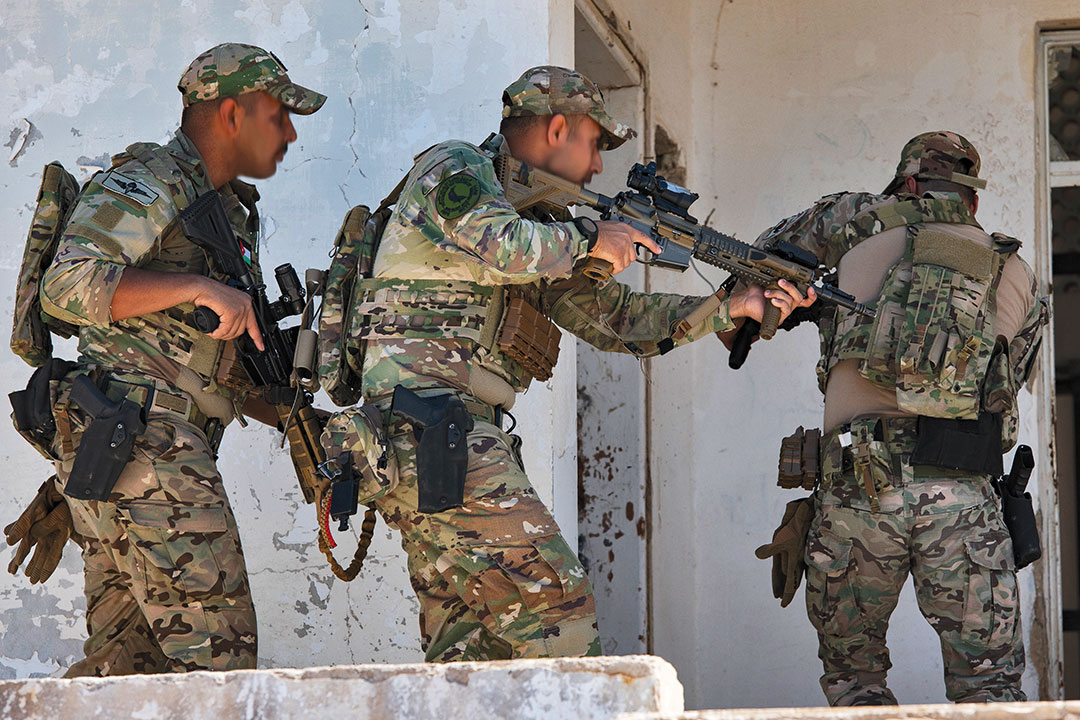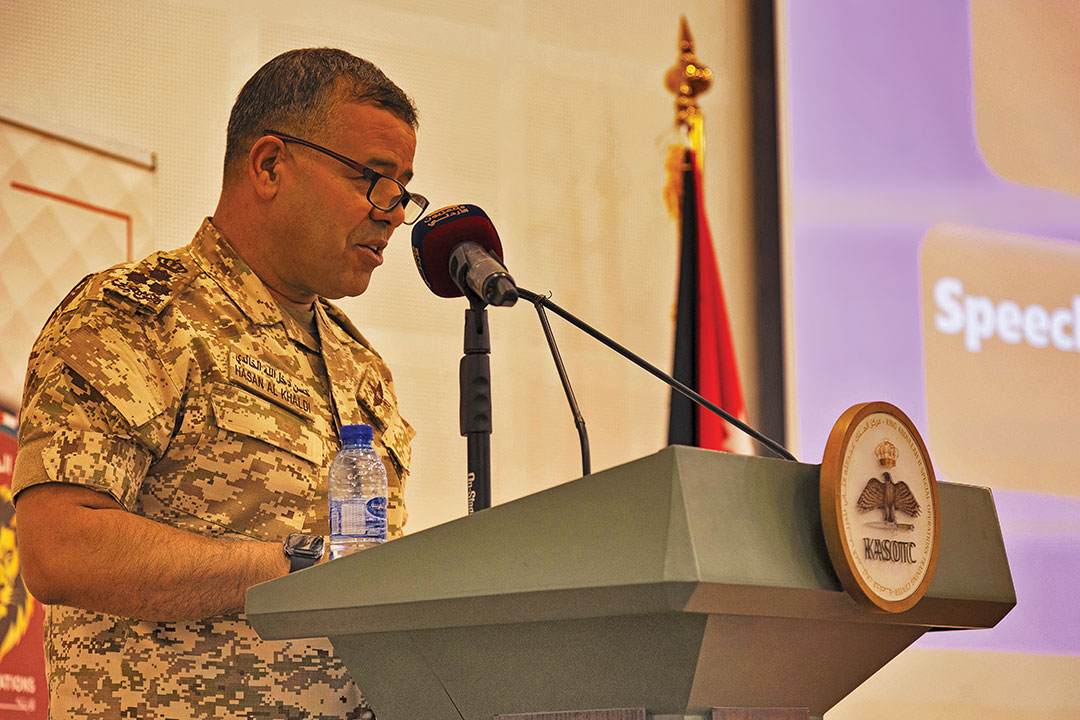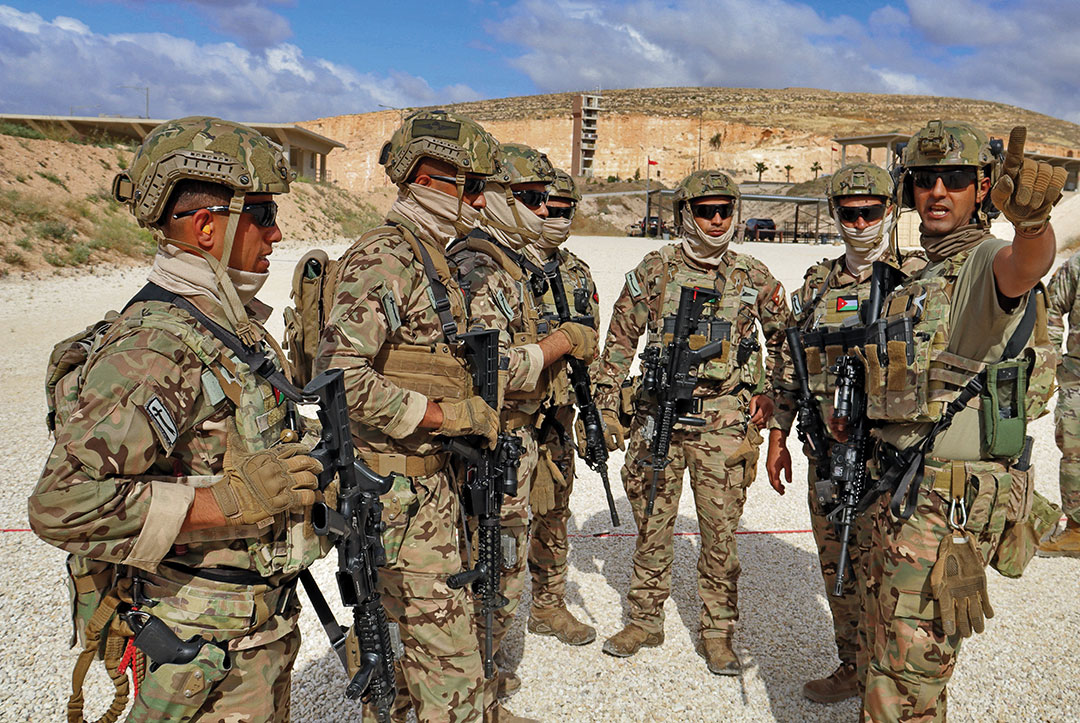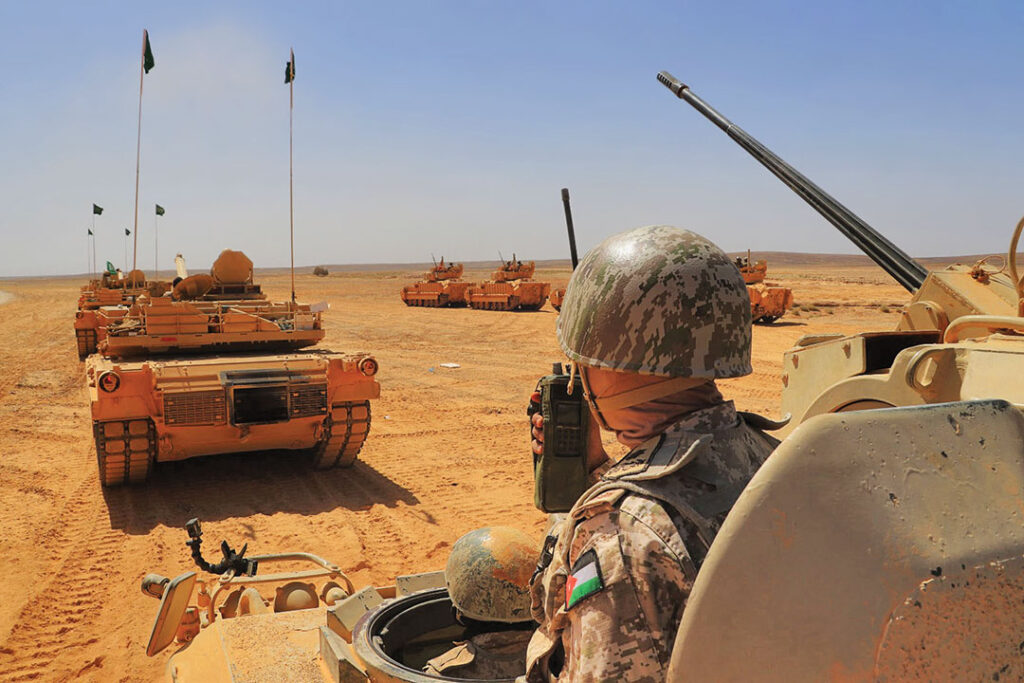During the Eager Lion 24 exercise held in Jordan, Unipath interviewed Brig. Gen. Hasan Al-Khalidi of the Jordan Armed Forces-Arab Army General Command. He discussed modern challenges to designing an effective training curriculum for troops under his command.
Unipath: How important are joint international exercises like Eager Lion to the Jordan Armed Forces-Arab Army?
Brig. Gen. Hasan: In its training and security strategies, the General Command of the Jordan Armed Forces-Arab Army aims to promote military ties with our partners from friendly and brotherly nations. Eager Lion is one of the most important products of these partnerships that strengthen cooperation and coordination between participating nations across all military fields.
Eager Lion is the product of strategic efforts by the Jordan Armed Forces to strengthen and promote ties with participating nations across all military fields, particularly those related to training, thereby enhancing alignment with allied nations and promoting mutual cooperation while strengthening coordination between the Jordan Armed Forces, Security Services, and state institutions and organizations such as the National Center for Security and Crisis Management. This occurs within a joint operations environment so that the Jordan Armed Forces can meet any threat.
Through joint operations, we can achieve the successes to which we aspire in the face of the global and regional security risks surrounding us that require a concerted international effort so that everyone can enjoy security and peace.

Unipath: How has Jordan’s military shaped training to respond to threats like drones and cyberattacks?
Brig. Gen. Hasan: The rapid development of military technologies, along with the diversity of their applications, poses a significant challenge for planners and program makers, requiring constant reevaluation of training operations and a focus on the proper use of technology to confront and deal with them.
The Armed Forces also follow a flexible training policy capable of confronting all variables and building a highly efficient, flexible and dynamic military force to deal effectively with challenges and rapid changes.
The world has witnessed the development and growing role of unmanned aerial vehicles (UAVs), which have become a tool of modern warfare and an effective strategic option in many cases and for various military operations, starting with intelligence gathering, surveillance and reconnaissance, on down the line to directed air strikes. Cyberattacks also constitute a clear and systematic threat. By controlling, disabling or destroying the operating systems of vital state institutions based on specific goals, cyberattacks are also one of the most prominent tactics of modern warfare.
Based on all these facts, Eager Lion 24 was organized to achieve a number of strategic, operational and tactical objectives, including increasing capacity in information operations and artificial intelligence, cybersecurity, and counter unmanned aerial systems.
Unipath: What disciplines does the Jordanian military focus on in its exercise plans?
Brig. Gen. Hasan: The Jordan Armed Forces follows a policy that caters to improving the level of training across all its ranks in the areas of tactics, technical competence and logistics. Such a policy serves Jordan’s flexible military doctrine predicated on the ability to confront variables and to build highly efficient and dynamic military forces capable of adapting to different circumstances, confronting challenges, and dealing efficiently with those challenges and emerging variables internally and externally. Additionally, the policy seeks to prepare troops for a steadily accelerating pace of events, changing pattern of wars, and diversity of threats, to bring the units and formations of the Jordanian Army to the highest levels of combat readiness to carry out the tasks and duties assigned to them.
Training is closely linked to the political orientation of the state, which determines military doctrine. Training derives its methods from that doctrine, which determines the nature of any potential war, its objectives and how to prepare the state and the Armed Forces to fight such a war in the best way possible with the latest available means and methods.

Leadership at all levels bears responsibility for training. It must be pragmatic and coherent, taking into account accelerating technological advancements, the development of combat doctrines, and potential challenges and threats that result from changes in the strategic environment. Such changes contribute to determining operational and intelligence requirements at the operational and tactical levels while comparing them to available capabilities. All this requires developing a training plan and controlled exercises that raise combat readiness of the Armed Forces, while accounting for continued development and economization of effort by managing available resources and technologies, utilizing time as best as possible, and adhering to the training plan.
Therefore, the training curriculum focuses on many different domains, namely traditional potential long-term threats, as well as nontraditional threats like smuggling and border security, nonstate actors, terrorist organizations, cyberattacks and information warfare.
Unipath: How important are advanced technologies and equipment for the Jordan
Armed Forces-Arab Army?
Brig. Gen. Hasan: Advanced technologies and equipment play a fundamental role in the national defense and security strategy of any nation. Over the past few decades, the world has witnessed a major shift in the fields of military-related technology that has significantly impacted the nature of warfare and armed conflict. Technology has enhanced the ability of armed forces to confront new and changing security threats with increased effectiveness. Nowhere is this more evident than with the use of smart weapons technologies, precision missiles, air and missile defense systems, drones, cybersecurity, and other technologies.
The continued improvement of military technologies has also improved the state’s regional and global competitiveness. The state often depends on the strength of its military and the military’s ability to protect its interests and secure its borders. Subsequently, by investing in military technologies, countries enhance their status and influence while reducing the costs and increasing the efficiency of managing military resources. So, the more advanced technologies armed forces have, the more efficiently and economically they can achieve their objectives, be they in training, maintenance or actual combat.

Rapid technological advancements and their diverse military uses pose a major challenge to those who draw up training plans and programs. Such a challenge necessitates constant reevaluation of training operations and a focus on the proper employment of technology in a way that reduces effort, advances training, and increases alignment and coordination among the various branches of the military. The Armed Forces have thus reorganized and modernized certain combat capabilities, equipment and technologies, and assimilated advanced weapons technologies new to the world stage to keep pace with changes and adapt to threats.
The Jordan Armed Forces has a prominent role in research and development, as evidenced by the creation of the Jordan Design and Development Bureau (JODDB), a government agency operating under the umbrella of the Armed Forces to design, develop and manufacture prototypes of civil and military equipment. The JODDB’s creation marked a turning point for the structure and institutionalization of Jordan’s manufacturing capabilities and has been a shining example for the country at military exhibitions like Jordan’s Special Operations Forces Exhibition and Conference (SOFEX) and the UAE’s International Defense Exhibition and Conference (IDEX). Technologies from Jordan’s military industry highlight the Jordan Armed Forces’ excellence in the Middle East region.

